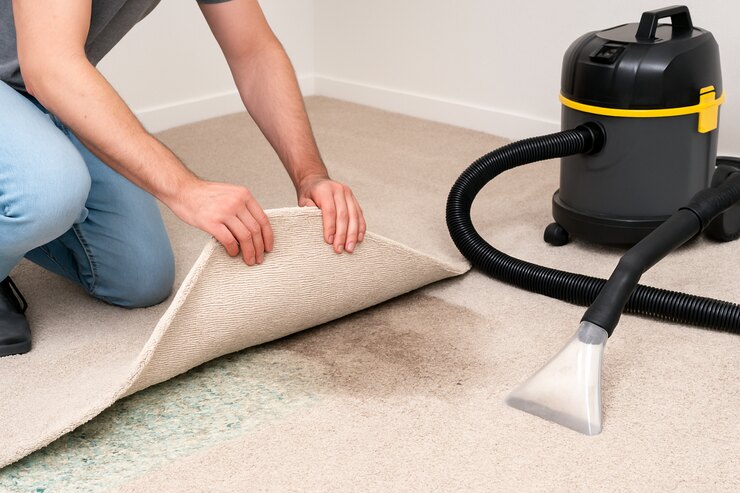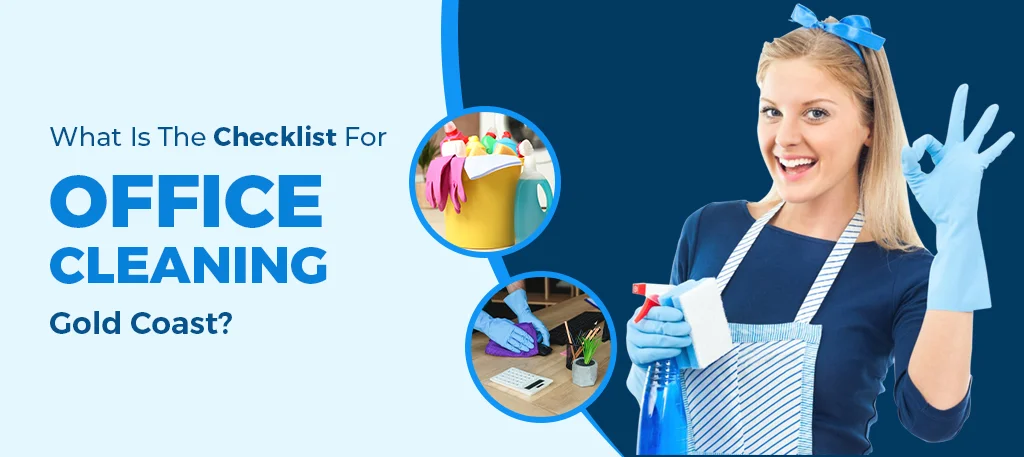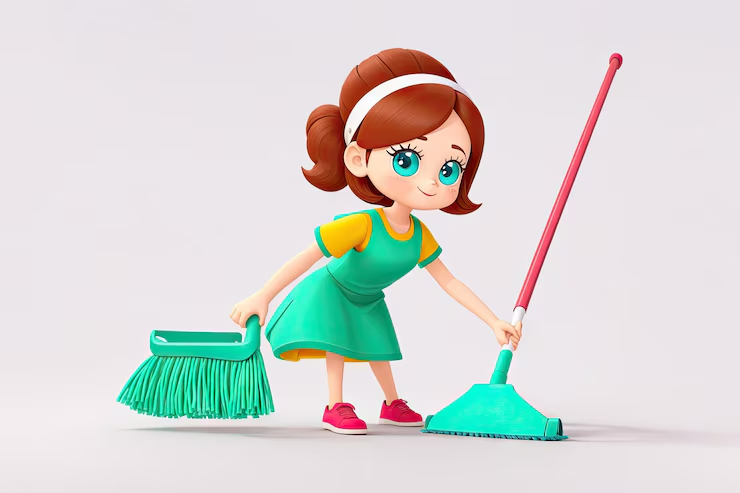Did you just arrive home to discover soggy carpets and know not where to begin? Can you save your precious carpet, or has hope vanished? Water Damaged Carpets probably the worst thing to deal with, especially if you do not know what to do afterwards.
The good news? You aren’t alone, and there’s hope for your water-soaked carpet if proper measures are taken! The most critical factor remains acting quickly, whether the damage was due to a pipe burst, a washing machine flood, or sheer heavy rainfall. We are providing this step-by-step guide as per bond cleaning Perth to enable you to restore your carpet from drying to disinfection and possibly save it from mould, odours, and expensive replacements. Let us begin!
1. Evaluate the Extent and Kind of Water Damage
Assess the damage before beginning any restoration work. The water should be classified into three categories: clean, grey, or black. Clean water damage would usually come from rain or water pipes. Grey water might have come from kitchen appliances or other sources, but would still be considered dirty, and black water would be contaminated sewage or other sources of water. Clean water damage can readily be handled at home; however, in the case of grey and black water, skilful attention would be required due to the health risks involved in the process.
The checks then extend further to cover the distance throughout which the water has pervaded- whether it is localised in one area, or it has soaked into walls and underlay. Early assessment helps in appraising the correct cleaning ways and if the carpet can be saved at first.
2. Remove the Excess Water Immediately
Time is at work every second counts in the case of a water-damaged carpets. Moisture stays longer and increases the development of the mould and damage. Wet vacuum units or water extraction machines are used to remove as much water from the carpet as possible. You should find a very simple placing activity, but for hire at hardware stores all.
If you are moving out but facing such issues, Royalty bond cleaning Toowoomba shall lend you a hand in not only saving quality carpets, but also top-notch cleanup that is generally required for bond release.
3. Lift and Dry the Carpet Thoroughly
After taking away most of the water, lift the carpet carefully to ensure that air can move under it. Remove soaked carpet padding- it will need replacing more often than not.
Direct heat from heaters may cause shrinkage of carpets or damage to the carpet’s fibres as well. Based on the weather and the extent of water damage, drying could take a 24-72 hour time range requirement. Patience is the keyword in this stage, as you may spoil your entry if you hastily juggle steps.
4. Clean and Disinfect the Carpet
Most vital cleaning and disinfecting occur after getting the area dry. To remove most of the dirt and debris, vacuum the area. Carpet shampoo or mild detergent mixed in water may then be applied to the strands of fibre. A soft washbrush or sponge is used to scrub the surfaces gently.
Disinfecting surfaces is essential, especially when murky or dark water flows, so a mixture of water and white vinegar, or some other type of commercial disinfectant, may be employed. This way, you will be able to kill bacteria, allergies, and smells that cling to those fibres. Deep cleaning by professionals, such as diligent Bond Cleaning Perth, will give assurance on carpets’ credibility at rental inspection standards for an individual intending to vacate soon.
5. Eliminate Musty Odours by Deodorising
Carpets will still smell damp or musty after being completely dried and sanitised. You could deal with such areas by properly sprinkling the soil with a generous amount of baking soda and letting it sit there overnight to draw in the odours and moisture. Then vacuum the area thoroughly the next day.
Commercial deodorising carpet sprays or essential oil sprays can also give a clean, fresh fragrance instead. Always ensure that the products that you use are safe for the type of carpet you have. Airing the place will help in fresh air circulation and will not let stale smells hang around.
6. Replace Padding and Reinstall Carpet
Make sure that the carpet is clean and dry. If you have removed the underlay or padding, put in a new one. Slowly and carefully guide the carpet back onto the floor, so that creases or loose edges are not visible.
This can become an art, as with large expanses of carpet and handling wall-to-wall installations, which requires a professional touch. For tenants getting ready to leave, it can be an important practice for professional reinstallation.
7. Watch for Mould and Monitor
After the carpet reinstallation was completed, the job wasn’t over. Keep watch for mould or mildew during the next several weeks. Colour change, musty smells, or aggravated allergies may signal that trouble lurks beneath. If the mould returns, consult one at once.
Tracking these sets of activities helps ensure safety in the long run while guaranteeing good air quality within your house. You could consider using spray treatments for the carpet to inhibit mould growth.
Wrapping Up
Restoring Water Damaged Carpets may seem really tough, but it can surely be done if the proper steps are taken in time. Everything from removing excess water and deep drying to disinfecting and deodorising has its place in restoring the life to the carpet. Time is of the essence, and early and quick action are the best forms of prevention against mould and long-term damage; however, where damage is extensive or the water is contaminated, do not hesitate to call in the professionals. Your carpet can be made good as new-with this bit of effort and care-it can become clean, freshly scented, and ready to add beauty to your space yet again!
Also learn about The Top 10 equipment for dusting your whole house




